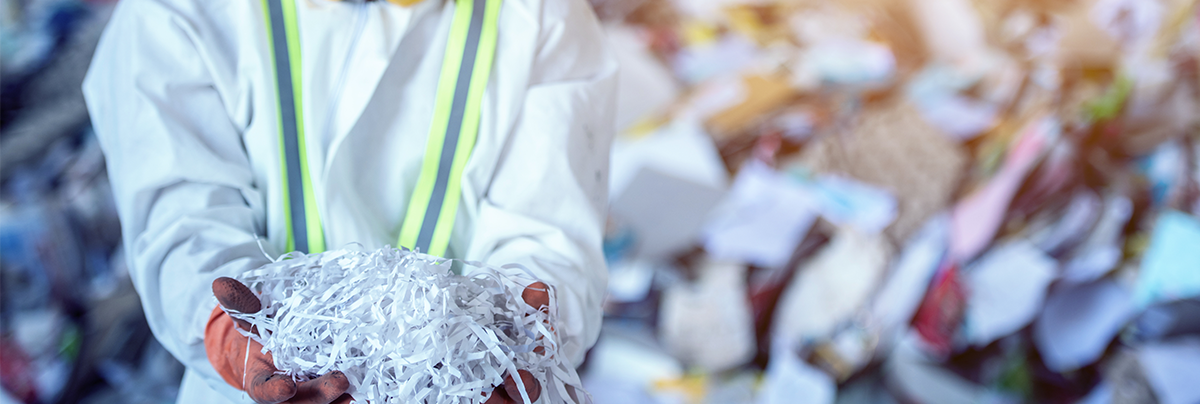Top 4 Ways Companies Waste Money on Packaging

Packaging is often one of the most significant expenses for companies in all verticals. Controlling costs while getting the quality, service, and product guarantees your company relies on is a common theme across all organizations.
Packaging waste hurts your bottom line, and the waste often becomes waste in the environment. The ongoing conversation about sustainability is a topic that companies and consumers are invested in. Packaging waste is a big turn-off for consumers and for a good reason. We have a responsibility to our planet, and controlling waste is part of that responsibility.
Here are the top four ways that companies waste money on packaging and our pro tips for what you can do to get ahead of the waste. We’ll look at how companies waste products, time, energy, transportation costs, and other resources.
One: Ineffective Packaging Products
There are countless options regarding what type of packaging is available for your products. When it comes to outer packaging, waste often comes into play when damage occurs. It creates waste regarding the product itself being damaged and the wasted packaging. To take it a step further, the cost to transport the goods back to the distributor and facilitate the return process creates even more waste of time and customer service resources.
By selecting the proper packaging from the start, damage can be avoided. Sometimes these products cost more, but the long-term savings on waste make up for spending more on quality products.
Many companies are moving away from traditional cardboard boxes to opt for more efficient packaging solutions like envelopes and mailers. Envelopes and other types of mailers have a broad range of applications for many types of products. They are also more efficient to ship.
Another way that companies waste on packaging products is with dunnage or void fill. Whether it’s wasting money by choosing the wrong type of void fill or overstuffing the box, waste can occur if void fill is not chosen correctly. Waste can also happen if the void fill is not protective enough, again leading to waste damage.
Two: Equipment Failures and Lack of Equipment Service
Packaging equipment is designed to make distribution centers more efficient. It helps to keep output high and warehouses running at optimal speeds. Machinery can produce what humans can’t, often creating a distribution center safer for workers. Unfortunately, if the equipment is not managed correctly – you guessed it – waste can occur.
Machines and equipment are built to last many years and even decades, but wear and tear are expected. It is critical to maintain all equipment to ensure things are running correctly regularly.
A few signs that indicate your machinery needs service or replacement include increased downtime, aging equipment, reduction in speed, and production changes. Another way companies save money is by using the right products with their machinery. Every machine has specific product requirements – inefficiencies occur when these requirements are unmet.
Three: Time Wasted in Distribution Centers
Inefficiencies in your supply chain that cause delays or unnecessary complications create significant waste of time and materials.
Is your distribution center layout designed for efficiency for your workers? For instance, if two products are commonly packaged together, they should be stored nearby. From Logiwa: “Rather than a dispersed, decentralized process, your facility will reduce labor costs by minimizing unnecessary movement and accomplish more by speeding up the packaging process.”
Another way time is wasted is through stock replenishment deficiencies1. Purchasing departments often waste time guessing what to order or waiting for products to be out of stock to order when inventory needs to be managed correctly. Companies that use up-to-date systems for tracking stock levels and “purchasing velocity” can waste less time and order more efficiently.
Time is also wasted by manual processes that could be easily transitioned to semi-automated processes. One example is labeling. It is a mundane and tedious process that costs time and creates worker safety concerns. At Envoy Solutions, we offer a full line of semi-automated packaging equipment for labeling, tape dispensing, case sealing, palletizing, shrink and stretch wrapping, and more.
Four: Improper Use of Mixed Packaging
When it comes to packaging products, we can combat waste by recycling. Ensuring your end user knows what materials can be recycled and how to recycle them is essential. People often avoid recycling simply because they don’t know if an item is recyclable.
One thing that complicates recycling is mixed packaging. For example, if a paper label is on a plastic bottle, the two materials must be separated before recycling. For this specific example, many companies have transitioned to digital printing instead of labels to avoid mixed materials.
If there is no choice and the materials must be packaged together, ensuring the “breakaway”2 – or separation of the materials – is easy and possible
How Can You Reduce Waste in Your Packaging Line
The natural questions to ask next are: (1) How much unnecessary waste does your packaging line have, (2) What impact does this have on your customer, the environment, and your bottom line? And (3) What can you do about it?
1. 7 Times Sucks in Your Logistics Operations
2. Six Ways that Distribution Centers Can Reduce Packaging Waste

